Major X9.33 solar flare
Wednesday, 6 September 2017 16:28 UTC
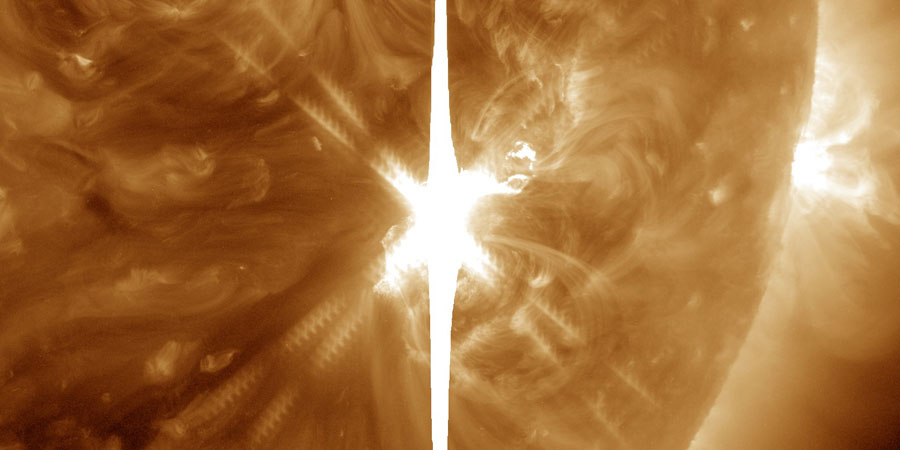
What a day! The strongest solar flare of solar cycle 24 erupted today at 12:02 UTC and of course it was sunspot region 2673 that took center stage. It was a memorable X9.33 solar flare (R3-strong radio blackout) which was highly eruptive as well. We have to go all the way back to 5 May 2015 to find the last time we had an X-class solar flare and it has been 12 years ago since we had a solar flare which was stronger than today's X9.3 event! Not bad considering we are already in the declining phase of solar cycle 24!
Major X9.33 solar #flare from #sunspot region 12673
— SpaceWeatherLive (@_SpaceWeather_) September 6, 2017
Follow live on https://t.co/3Xxrvc3cpA pic.twitter.com/iTG9ItBGPL
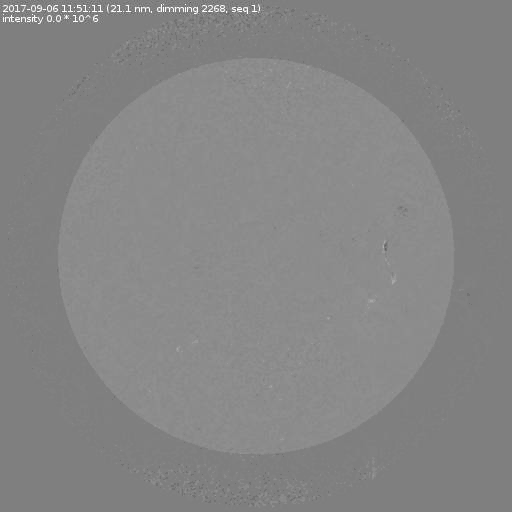
⇧ Animation: SDO/AIA 211 difference footage showing the eruptive solar shock wave as it travels trough the corona and coronal dimming caused by ejected material.
Coronagraph imagery from STEREO A shows just how eruptive the X9.33 solar flare was. From STEREO A's point of view we are looking at a far side halo coronal mass ejection. It looks truly massive and seems fast as well. We still have to wait for SOHO/LASCO coronagraph images for a more detailed analysis but the plasma cloud likely has an earth-directed component. The DSN will be in contact with SOHO again starting at 18:30 UTC so expect imagery to come in after this time. We will do our best to update with a detailed analysis later tonight when SOHO imagery becomes available. In the mean time enjoy this animation of the coronal mass ejection as seen by STEREO Ahead COR2: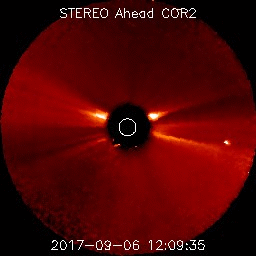
X2.2 solar flare
But first things first: after more than 12 hours without any M (or higher) solar flares, it was an X2.2 solar flare today at 09:10 UTC that signaled the beginning of what now is a memorable day. This solar flare seemed however very isolated within the group and did not launch a coronal mass ejection.
For an overview of the solar X-ray flux of the past 24 hours check out this page.
Can we expect more flares?
This morning we reported on our Facebook page that sunspot region 2673 remained incredibly complex and there was still a chance that it could produce a major solar flare despite the fact that it was relatively quiet over night. It turned out to be the silence before the storm. How does sunspot region 2673 look like following today's events? Is it still complex? We got you covered:
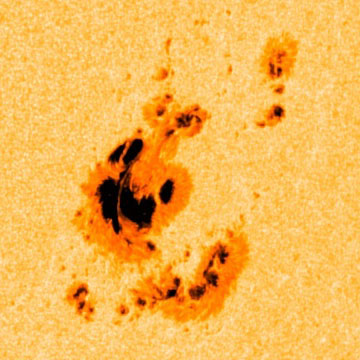
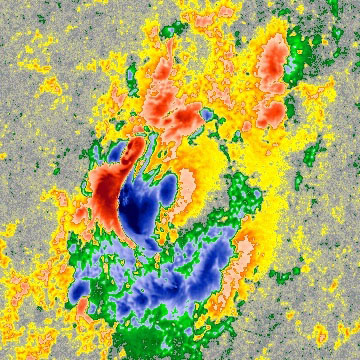
Sunspot region 2673 remains incredibly complex with a massive delta structure squeezed between two positive polarity umbrae. There is a lot of magnetic tension within this group and more M and perhaps even X-class activity remains possible!
CME impact expected today
It would almost slip your mind but there is already a coronal mass ejection on it's way to Earth and it is expected to arrive within the next 6 hours. A moderate G2 geomagnetic storm watch is in effect for the remainder of this day into tomorrow. There is even a slight risk that we could reach strong G3 geomagnetic storming conditions.
Thank you for reading this article! Did you have any trouble with the technical terms used in this article? Our help section is the place to be where you can find in-depth articles, a FAQ and a list with common abbreviations. Still puzzled? Just post on our forum where we will help you the best we can!
Latest news
Latest forum messages
Support SpaceWeatherLive.com!
A lot of people come to SpaceWeatherLive to follow the Sun's activity or if there is aurora to be seen, but with more traffic comes higher server costs. Consider a donation if you enjoy SpaceWeatherLive so we can keep the website online!

Space weather facts
| Last X-flare | 2025/03/28 | X1.1 |
| Last M-flare | 2025/04/22 | M1.3 |
| Last geomagnetic storm | 2025/04/21 | Kp5+ (G1) |
| Spotless days | |
|---|---|
| Last spotless day | 2022/06/08 |
| Monthly mean Sunspot Number | |
|---|---|
| March 2025 | 134.2 -20.4 |
| April 2025 | 126.2 -8 |
| Last 30 days | 126.5 -1 |


